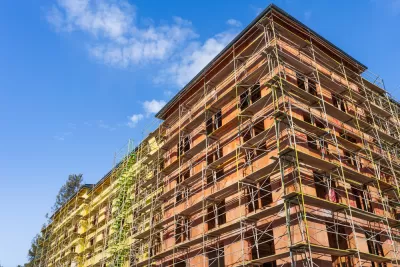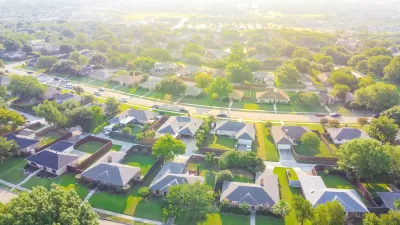How local attitudes toward zoning reform hinder efforts to boost housing production.

In a piece in City Journal, Christopher S. Elmendorf, Clayton Nall, and Stan Oklobdzija describe the results of a survey that assessed the factors Americans blame for high housing costs, noting that many respondents expressed skepticism that upzoning initiatives would lower housing costs. Unlike other consumer goods, in the minds of many Americans, housing does not respond to the normal pressures or supply and demand. This makes zoning reform that is more permissive to higher density housing and new construction an uphill battle in many communities.
“Asked to think about their city’s future, the vast majority of respondents across two surveys—Republicans and Democrats, homeowners and renters—say that they wish home prices and rents were lower. But they don’t generally subscribe to the other half of the elite consensus: namely, that restrictive zoning is to blame for high prices.” In other words, “We find that most people simply don’t believe that increasing housing supply would lower prices.” According to the authors, “Across all the survey variations, only a minority of respondents predicted that a large, positive supply shock would exert downward pressure on home prices and rents.”
The authors add, “We asked respondents to designate up to three actors as being ‘responsible for high housing prices and rents in your area.’ Developers and landlords took the brunt of the blame; environmentalists and anti-development activists got off scot free.” Ultimately, “[the] study suggests that states have done little because there’s not yet widespread public support for preemptive state up-zoning.”
FULL STORY: Folk Economics and the Politics of Housing

Alabama: Trump Terminates Settlements for Black Communities Harmed By Raw Sewage
Trump deemed the landmark civil rights agreement “illegal DEI and environmental justice policy.”

Planetizen Federal Action Tracker
A weekly monitor of how Trump’s orders and actions are impacting planners and planning in America.

The 120 Year Old Tiny Home Villages That Sheltered San Francisco’s Earthquake Refugees
More than a century ago, San Francisco mobilized to house thousands of residents displaced by the 1906 earthquake. Could their strategy offer a model for the present?

Ken Jennings Launches Transit Web Series
The Jeopardy champ wants you to ride public transit.

BLM To Rescind Public Lands Rule
The change will downgrade conservation, once again putting federal land at risk for mining and other extractive uses.

Indy Neighborhood Group Builds Temporary Multi-Use Path
Community members, aided in part by funding from the city, repurposed a vehicle lane to create a protected bike and pedestrian path for the summer season.
Urban Design for Planners 1: Software Tools
This six-course series explores essential urban design concepts using open source software and equips planners with the tools they need to participate fully in the urban design process.
Planning for Universal Design
Learn the tools for implementing Universal Design in planning regulations.
Clanton & Associates, Inc.
Jessamine County Fiscal Court
Institute for Housing and Urban Development Studies (IHS)
City of Grandview
Harvard GSD Executive Education
Toledo-Lucas County Plan Commissions
Salt Lake City
NYU Wagner Graduate School of Public Service





























